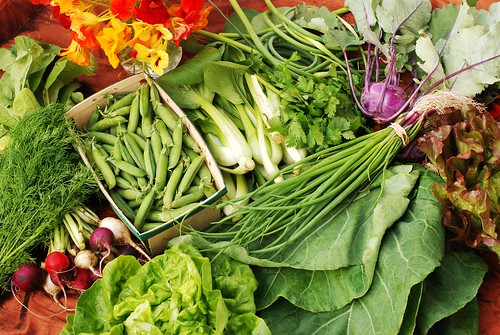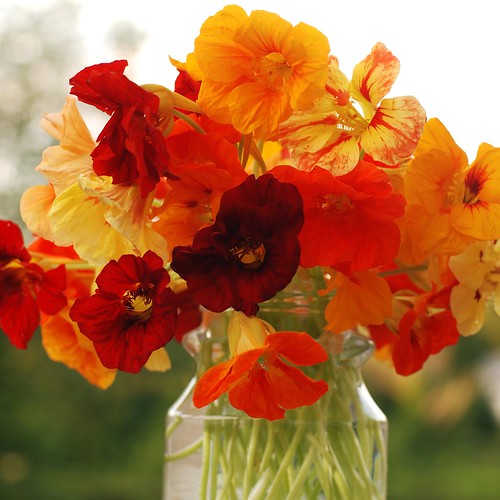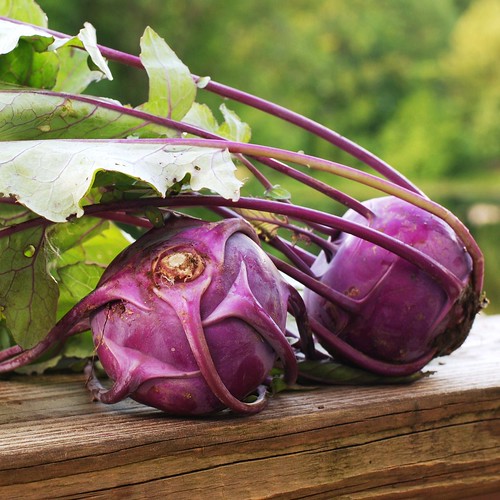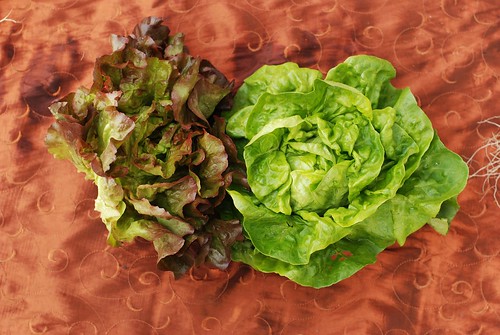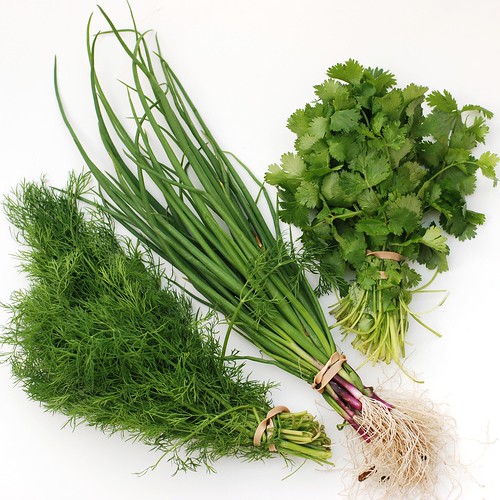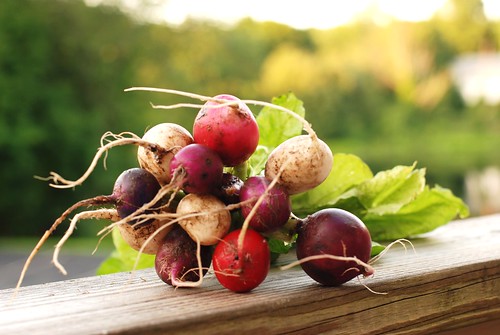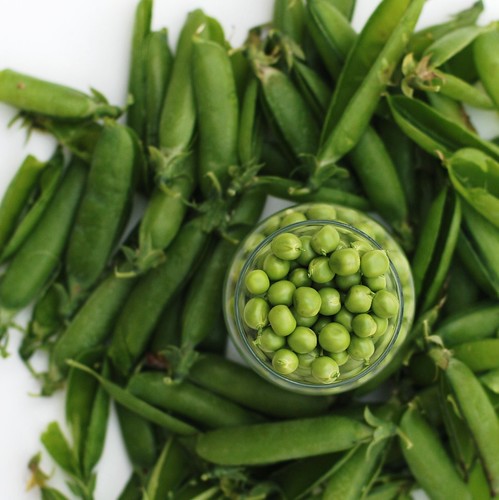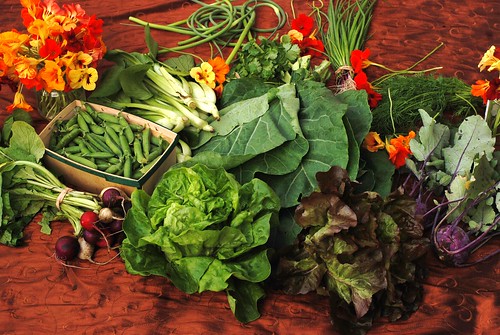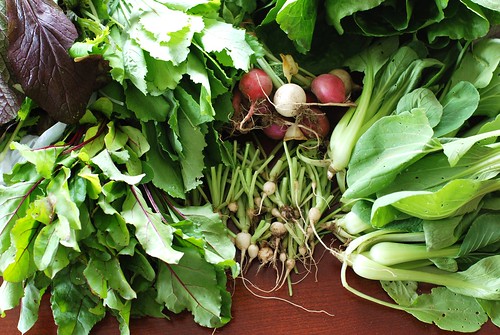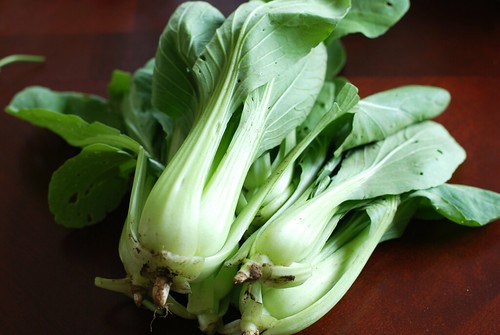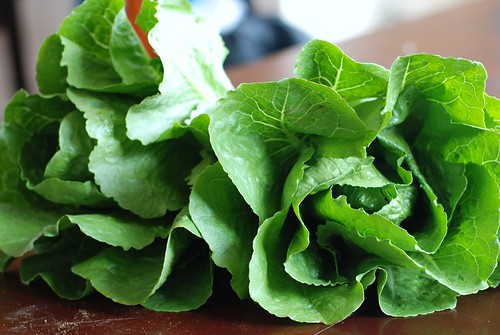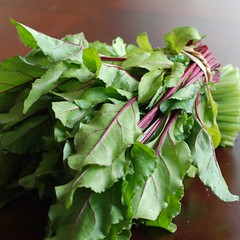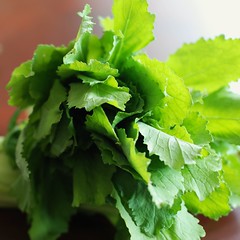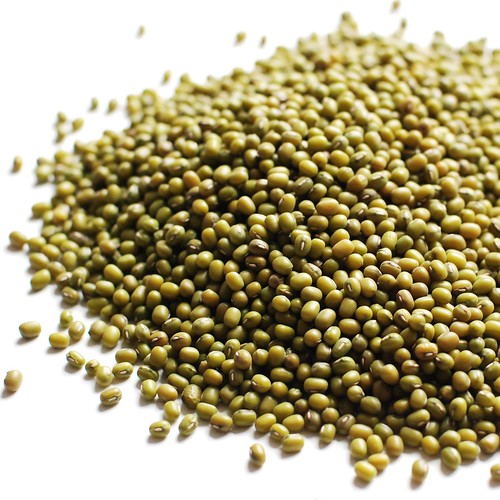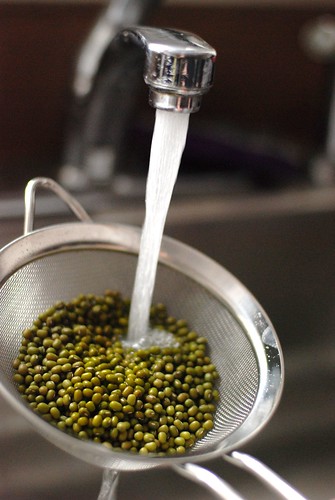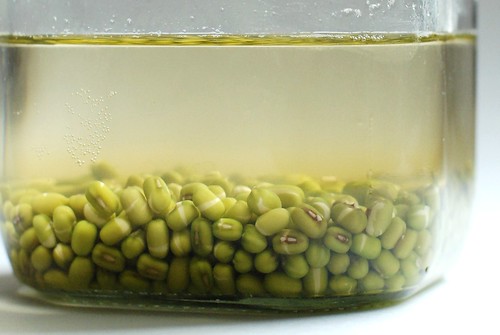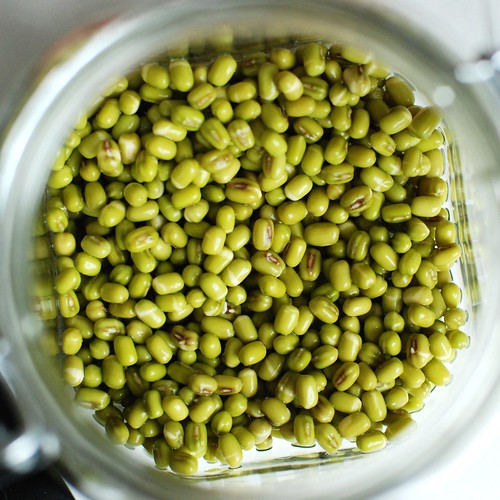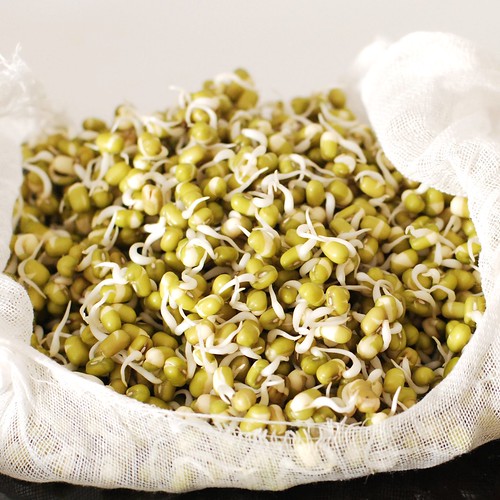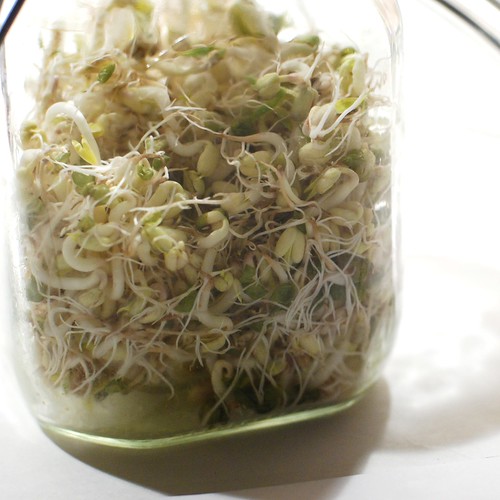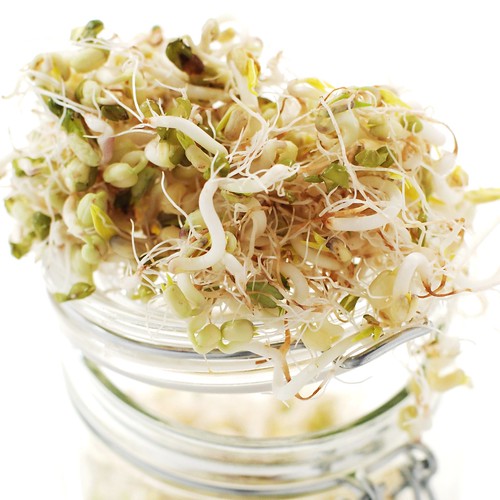Weeks 2 & 3 of our CSA harvest were pooled with everyone else’s share because we were in California. But week 4 we had all to ourselves, as Heather & Jon (our share partners) were still in California on pick up day, so that’s almost like only missing the one share, hooray! Here’s what it looked like:
WE HAVE (roughly left to right)
- 1 bunch dill
- 10 radishes (1/2 lb), with leaves
- 2 pints peas
- All the nasturtiums I cared to pick (did not find out they were edible flowers until they had been wilting in a vase for awhile)
- 1 head bibb lettuce
- 1 lb bok choy
- 8 garlic scapes,garlic chives, or whatever your farmer’s market or CSA calls them
- 1 bunch cilantro
- a big old buncha collard greens
- 1 bunch scallions
- 2 kohlrabi
- 1 head red lettuce
Our cost for a half share is $14.20. Half of the above is worth about $15.03, or $17.53 if you count the flowers, which I do because I buy flowers for the house regularly. It should also be taken into consideration that these are organic vegetables (which drives up the price of the share) and I’m comparing to conventional vegetables at grocery store prices (which is what I’d most likely be buying if I didn’t have a share). We haven’t yet broken even, as I miscalculated the last share, but I think we’ll get there.
This week’s harvest brought a few new veggies to my kitchen, which was the real draw of this little experiment, and I suspect I’m not alone in this. I’d been itching to get my hands on garlic scapes ever since our farmer mentioned them at the orientation two months ago (those weird circley vine-looking things at the top . . . just to the right of the center . . . don’t see them? Yeah, they don’t really stand out) and they are incredible! They taste pretty much like chives, except with a garlicky bite that doesn’t even leave an aftertaste. Totally refreshing! I tried cooking with them here and there, but I found that no matter how much I added, their flavour seemed to wash out. Moving forward, these are being used like regular chives—chopped and sprinkled atop.
The other new veggie was kohlrabi. This is a funky-looking veggie, and I had high hopes for its flavour to be equally funky, but alas, it works like water chestnuts or cucumber or other bland veggies. Still, one cup has like 35 calories, 5 g fiber and 140% of your vitamin C. So whoah, it’s good for you.
Lettuce is lettuce, but yay for fancy lettuce!
We’re finally starting to get some herbs and I’m so excited about this. I love love fresh herbs. Love them. So much. Mmm!
And though radishes aren’t the most flavourful of vegetables ever, the purple ones had this beautiful sheen on them, like a purple satin with a golden sheen as it moves. Really, so beautiful.
But the biggest surprise were peas. Now anybody who’s known me any length of time knows I hate peas, but as it turns out, fresh-from-the-vine peas out-of-the-pod are incredible. They taste, not like the mushy gross woody-tasting crap I remember from my childhood, but unbelievably sweet, like fresh sweet corn. It was, to reuse a word, unbelievable. Of course, in like, two days, they’d become gross woody-tasting crap I remember.
And those are vegetables! Dano really liked this shot, but I thought it was harder to make everything out than the one at the top. My compromise was to include it at the end.
So tell me, which veggie shot do you like better?



